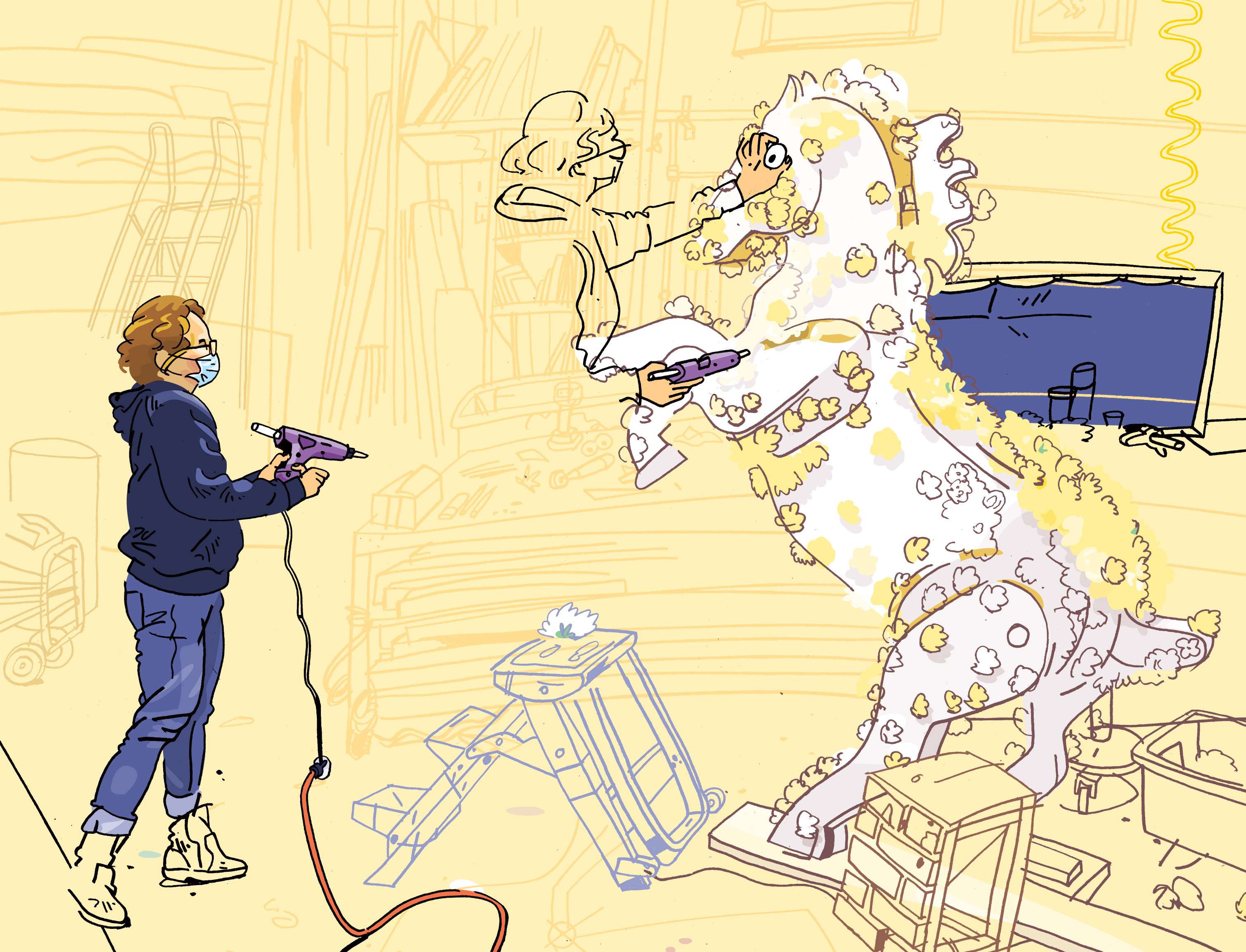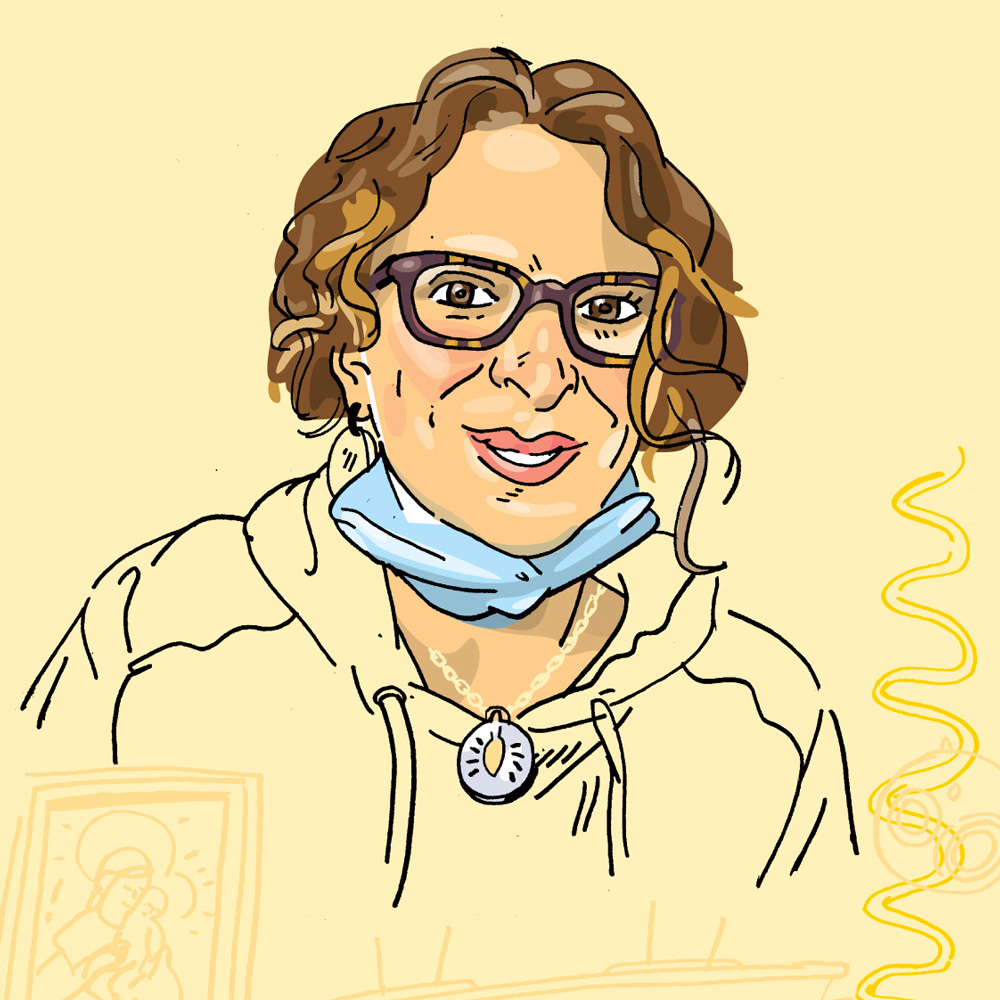
Behind the scenes Behind the scenes Behind the scenes
Tres Tracy Ballon is the master carpenter at the UW School of Drama. We talked to her about squirrels, big ideas and building sets (and boats).
Illustration by Olivier Kugler | March 2022
She builds boats, she constructs horses made of flowers, she rescues squirrels* — what can’t Tres Tracy Ballon do? We asked her what it’s like to have one of the most interesting jobs on campus.
“I wanted to study art in college, but I didn’t have any way to pay for it, so I decided to learn a trade. I went to boat building school at Seattle Central College. After I finished my AA, I enrolled at the UW and studied sculpture and art history, where I had a work study job in the scene shop.
“After college, I worked in commercial shops and I did museum installations and interactive National Park exhibit sorts of things before working as a scene shop supervisor at Cornish.
“Then the [master carpenter] job came up at the UW, which doesn’t happen very often.
“Every show is different. Every day is different. Last fall I built that horse.** Now I’m welding and cutting things out of wood for a play later this spring. There is no typical day in the scene shop. It’s always different. That’s one of the things I enjoy about it.
 “Students who come to get a master of fine arts in scenic design often design our sets. Theater is a very collaborative art form. The creative team of grad students — the director, lighting designer, set designer and costume designer — get together and talk about what the context is going to be: Is it set at a different time? Or the big idea for how this show is that everything is going to be blue.
“Students who come to get a master of fine arts in scenic design often design our sets. Theater is a very collaborative art form. The creative team of grad students — the director, lighting designer, set designer and costume designer — get together and talk about what the context is going to be: Is it set at a different time? Or the big idea for how this show is that everything is going to be blue.
“When we first get a look at their plans, we often say, ‘That’s a really cool idea, but it defies gravity and would cost $50,000.’
“Then it goes back into their hands and they develop a more reasonable preliminary design. From that point we budget the show, figuring out how much time and money we will need. Eventually they give us a painted scale model as well as larger color renderings, and we order materials and start building.
“I’ve been doing this for 20 years, so that’s a lot of sets — anywhere between four and six a year. It is a little sad to take the sets down. I think, oh, all that work and there it goes…but we do recycle a lot.”
* “Last year I raised a group of orphan squirrels. They fit in my hand and had little skinny tails. They were so much fun. I built a road box so I could bring them back and forth between work and home. One liked to ride around in the pocket of my hoodie. I spread a lot of squirrel joy at that time!”
** For “The Importance of Being Earnest”